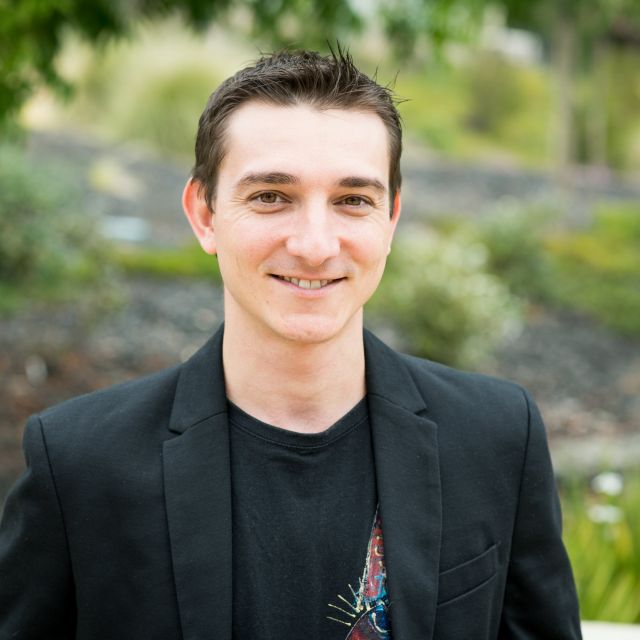
Jean-Marie Volland
Biography
After beginning his academic journey in the Caribbean, Jean-Marie Volland moved to the Indian Ocean and received his B.S. in Biological Science with a focus on organismal biology from the University of Reunion Island. He then pursued a Master's program in environmental science and coastal ecosystems at La Rochelle, France, before returning to the Caribbean to complete a Master's degree and a Ph.D. in Physiology and Biology of Organisms, Populations, and Interactions. His doctoral research shed light on the symbiotic relationships between sea snails and Sporozoan endobionts, highlighting their potential benefits, particularly in the context of conserving species like the Queen Conch.
During his first postdoctoral fellowship at the University of Vienna, Jean-Marie delved deep into the study of chemosynthetic microbial symbiosis, similar to those found in deep-sea ecosystems. This was followed by a second postdoctoral project in the Caribbean, focusing on chemosynthetic symbiosis between nematodes and bacteria, thereby broadening his expertise in marine microbiology. His career then took a significant turn in California, where he joined as a project scientist at the Laboratory for Research in Complex Systems, also affiliated with the DOE Joint Genome Institute. Here, his pioneering research on giant chemosynthetic bacteria laid the groundwork for his current role as an Assistant Professor at UCSB, where he aims to continue unraveling the mysteries of microbial life.
Research
At the heart of the Volland Lab's research is a fascination with the largely unseen majority of life on Earth - the microorganisms. Despite centuries of study, more than 99% of them have never been cultivated or even looked at under a microscope and we've barely begun to understand these organisms. The lab's focus is on uncultivated microbes that challenge our traditional notion of bacterial life. We are particularly intrigued by giant bacteria, such as the largest of them all, Thiomargarita magnifica, which form centimeter-long single cells, visible to the naked eye and blur the lines between simple and complex life forms. The Volland Lab explores environments like coastal marine hydrothermal vents and tropical mangroves to uncover these extraordinary microbes. Employing cutting-edge microscopy and genomic techniques, we're not just looking to describe these unusual bacteria; we're seeking to decode the essence of their existence. Questions such as what limits their size and shape, and how they organize their complex internal structures, are central to our research. This exploration is about pushing the boundaries of microbiology and discovering what these unique organisms can tell us about life's most fundamental processes.
Selected Publications
- Ionescu, D., Volland, J.-M., Contarini, P.-E., Gros, O. 2023. Genomic Mysteries of Giant Bacteria: Insights and Implications. Genome Biology and Evolution, 15 (9), art. no. evad163
- Volland, J.-M. 2023. Small cells with big secrets. Nature Reviews Microbiology, 21 (7), p. 414.
- Sannino, D.R., Arroyo, F.A., Pepe-Ranney, C., Chen, W., Volland, J.-M., Elisabeth, N.H., Angert, E.R. 2023. The exceptional form and function of the giant bacterium Ca. Epulopiscium viviparus revolves around its sodium motive force. PNAS, 120 (52), art. no. e2306160120.
- Volland, J.-M., Gonzalez-Rizzo, S., Gros, O., Tyml, T., Ivanova, N., Schulz, F., Goudeau, D., Elisabeth, N.H., Nath, N., Udwary, D., Malmstrom, R.R., Guidi-Rontani, C., Bolte-Kluge, S., Davies, K.M., Jean, M.R., Mansot, J.-L., Mouncey, N.J., Angert, E.R., Woyke, T., Date, S.V. 2022. A centimeter-long bacterium with DNA contained in metabolically active, membrane-bound organelles. Science, 376 (6600), pp. 1453-1458.
- Weber, P.M., Paredes, G.F., Viehboeck, T., Pende, N., Volland, J.-M., Gros, O., VanNieuwenhze, M., Ott, J., Bulgheresi, S. 2022. FtsZ-mediated fission of a cuboid bacterial symbiont. iScience, 25 (1), art. no. 103552.
- Bright, M., Espada-Hinojosa, S., Volland, J.-M., Drexel, J., Kesting, J., Kolar, I., Morchner, D., Nussbaumer, A., Ott, J., Scharhauser, F., Schuster, L., Zambalos, H.C., Nemeschkal, H.L. 2019. Thiotrophic bacterial symbiont induces polyphenism in giant ciliate host Zoothamnium niveum. Scientific Reports, 9 (1), art. no. 15081.
- Volland, J.-M., Schintlmeister, A., Zambalos, H., Reipert, S., Mozetič, P., Espada-Hinojosa, S., Turk, V., Wagner, M., Bright, M. 2018. NanoSIMS and tissue autoradiography reveal symbiont carbon fixation and organic carbon transfer to giant ciliate host. ISME Journal, 12 (3), pp. 714-727.